As I finished my freshman year and stepped into sophomore life, I found myself pausing more often, wondering what had truly changed. New friends, new habits, new routines. But underneath all of that, the biggest shift was internal. It was a deeper understanding of relationships—the ones we build, break, and sometimes carry with us without realizing how heavy they’ve become.
College throws you into a storm of interactions. You meet people from all walks of life, each carrying their own pasts, hopes, and fears. Some connections form instantly, others take time, and a few slowly drift away before they even begin. In this blur of constant social motion, I found myself asking: Why do some people’s words carry more weight than others? Why do certain actions hurt deeply while others barely leave a scratch?
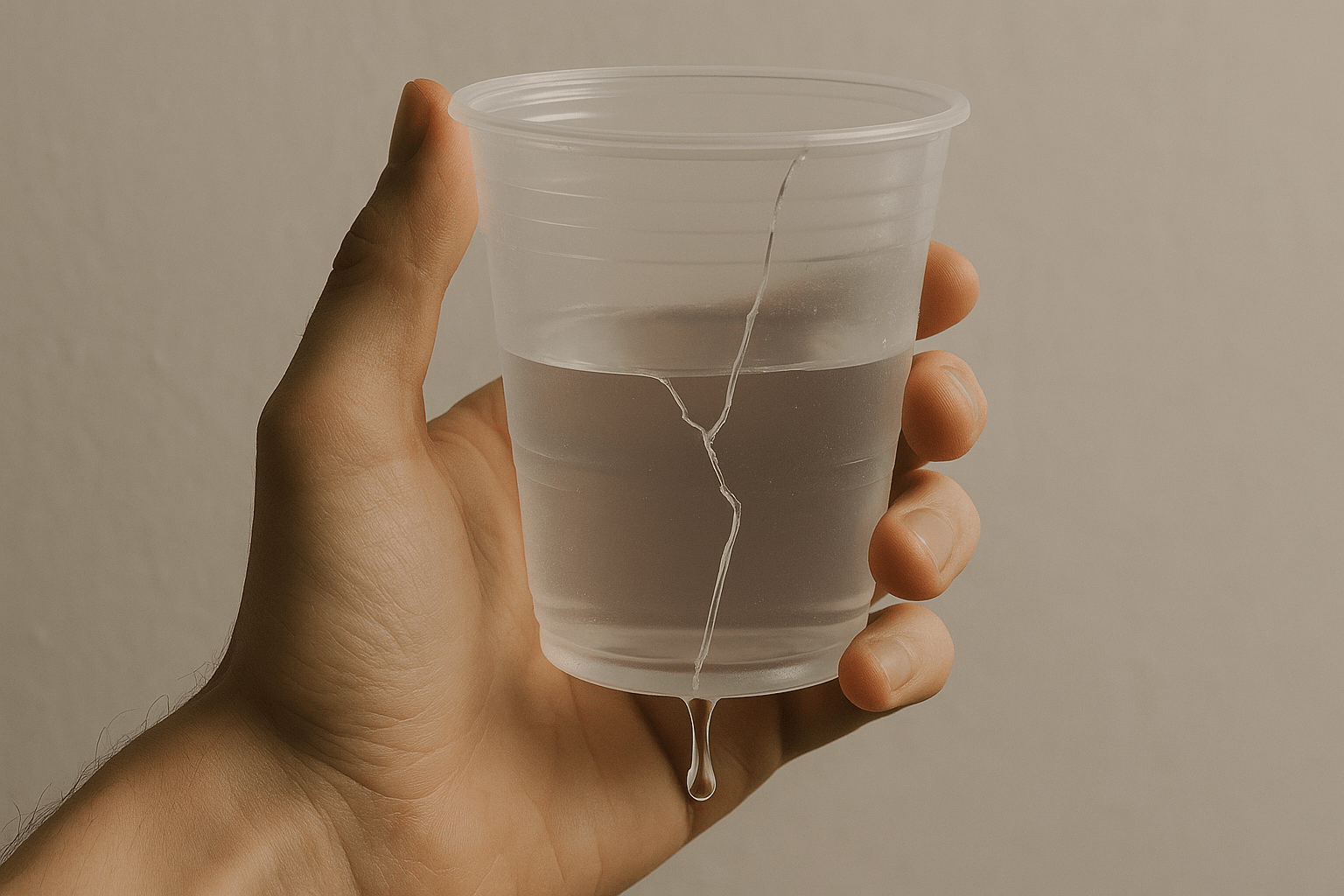 That question took me back to something my dad taught me when I was 11. Back then, I struggled with swimming. I wasn’t doing well, and we didn’t yet know the reason. One day, I made a mistake at practice. It was something small but enough to put a crack in the relationship between me and my coach. My dad brought me home, handed me a plastic cup, and told me to crack it. Then he said, “This is what happens in relationships. Once there’s a crack, no matter how much you tape it, glue it, or try to fix it, the water will always find a way to leak out.”
That question took me back to something my dad taught me when I was 11. Back then, I struggled with swimming. I wasn’t doing well, and we didn’t yet know the reason. One day, I made a mistake at practice. It was something small but enough to put a crack in the relationship between me and my coach. My dad brought me home, handed me a plastic cup, and told me to crack it. Then he said, “This is what happens in relationships. Once there’s a crack, no matter how much you tape it, glue it, or try to fix it, the water will always find a way to leak out.”
I thought I understood it then. But over time, that image evolved into something more layered for me. Literally.
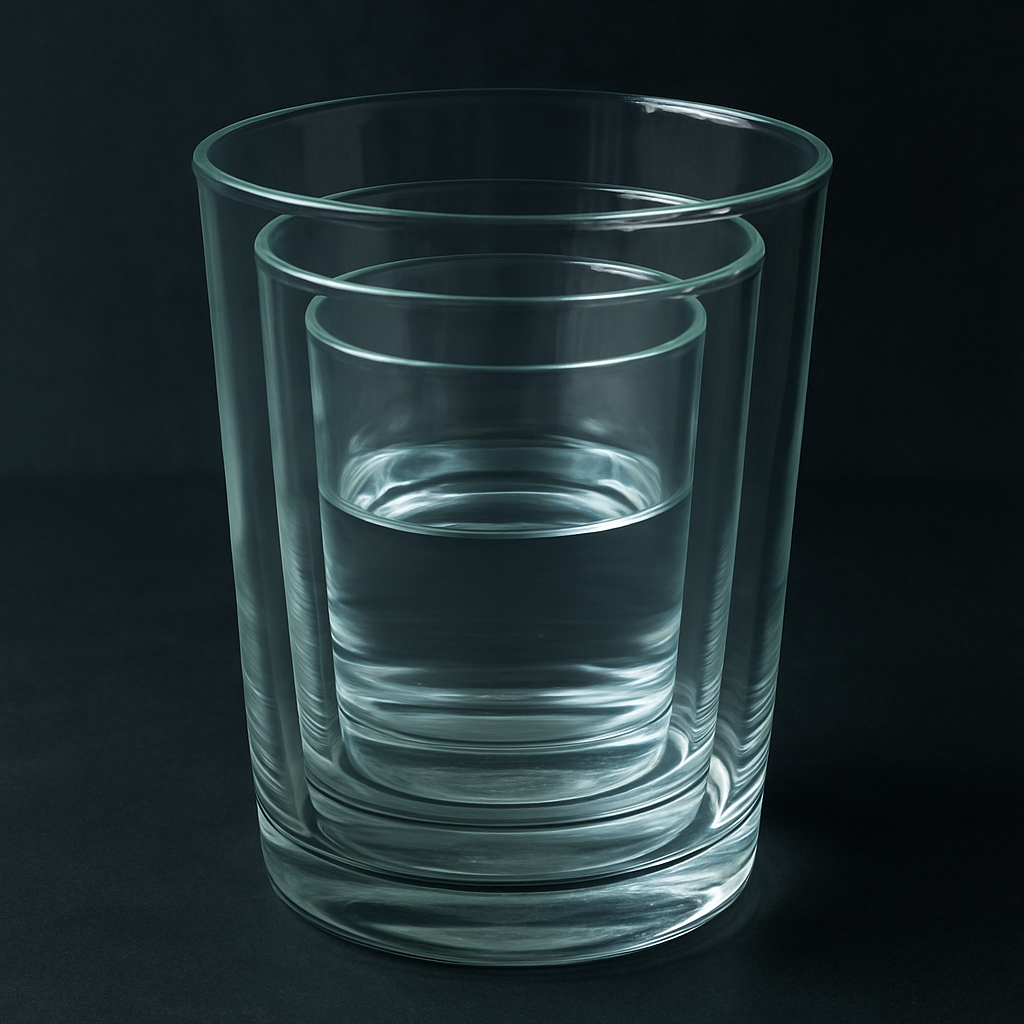 Now, I see every relationship as its own unique stack of glass cups, nested one inside another. The outer layers represent the walls we build around ourselves—our fears, our past hurts, our need to protect our vulnerability. These layers cloud the view of what’s inside, just like stacked glass blurs the water it holds. At first, this distance is comforting. When we meet someone new, those layers shield us. If they say or do something, it doesn’t cut too deep because they’re still on the outside. The inner glass is intact. And within the innermost layer sits the water. That water is the trust, the peace, and the purity shared between two people. It’s what makes a relationship feel real.
Now, I see every relationship as its own unique stack of glass cups, nested one inside another. The outer layers represent the walls we build around ourselves—our fears, our past hurts, our need to protect our vulnerability. These layers cloud the view of what’s inside, just like stacked glass blurs the water it holds. At first, this distance is comforting. When we meet someone new, those layers shield us. If they say or do something, it doesn’t cut too deep because they’re still on the outside. The inner glass is intact. And within the innermost layer sits the water. That water is the trust, the peace, and the purity shared between two people. It’s what makes a relationship feel real.
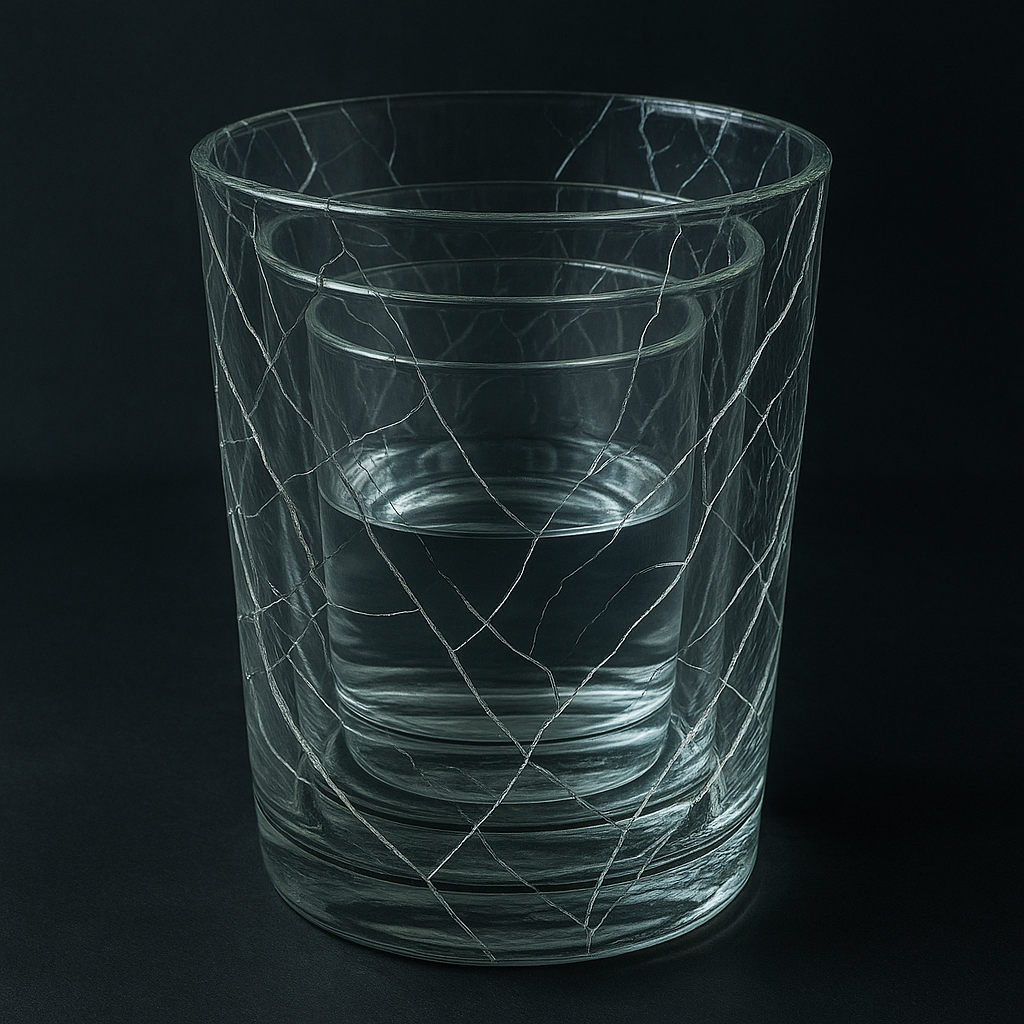 Some relationships stay surrounded by layers. They can feel “strong” because they’re safe, with so much space between two people that nothing ever reaches the core. But that safety comes at a cost. The water stays untouched, hidden, and unclear. The connection remains shallow—not because it lacks meaning, but because it hasn’t yet been tested. As trust builds, we begin removing those outer cups. We open up, share our stories, and allow ourselves to be seen more clearly. And with that, the relationship becomes more transparent, but also more fragile. There’s less between them and the heart of who we are. So when hurt happens—and it always does, at some point—it’s no longer deflected by the outer glass. It seeps through, leaving cracks where there was once clarity.
Some relationships stay surrounded by layers. They can feel “strong” because they’re safe, with so much space between two people that nothing ever reaches the core. But that safety comes at a cost. The water stays untouched, hidden, and unclear. The connection remains shallow—not because it lacks meaning, but because it hasn’t yet been tested. As trust builds, we begin removing those outer cups. We open up, share our stories, and allow ourselves to be seen more clearly. And with that, the relationship becomes more transparent, but also more fragile. There’s less between them and the heart of who we are. So when hurt happens—and it always does, at some point—it’s no longer deflected by the outer glass. It seeps through, leaving cracks where there was once clarity.
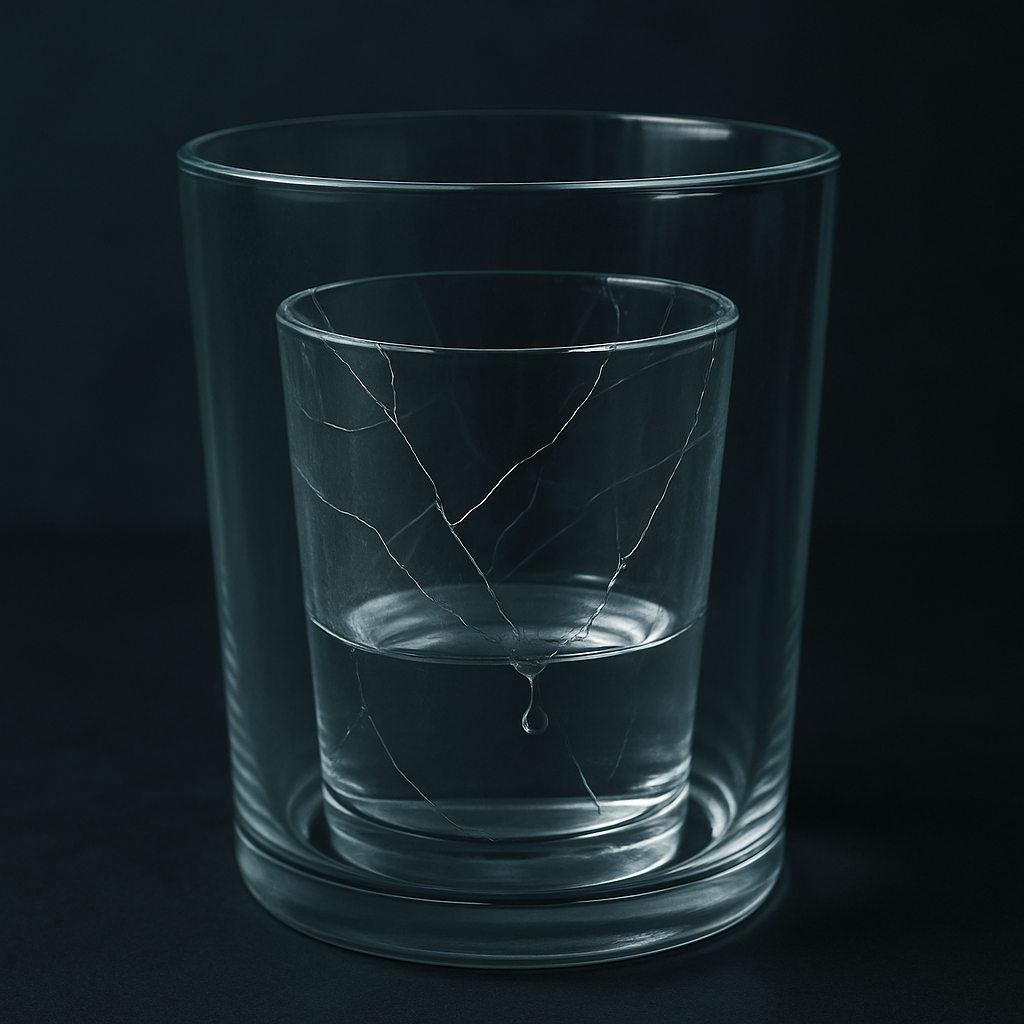 The hardest part isn’t the hurt. It’s what comes after.
The hardest part isn’t the hurt. It’s what comes after.
When the water starts to leak, we face a choice: let it drain and watch the relationship fade, or step back and try to save it. But saving it doesn’t mean pretending the crack never happened. That only leads to more leaking, more damage. No, it means adding a temporary layer of protection, taking a step back with some emotional distance, to stop the leakage.
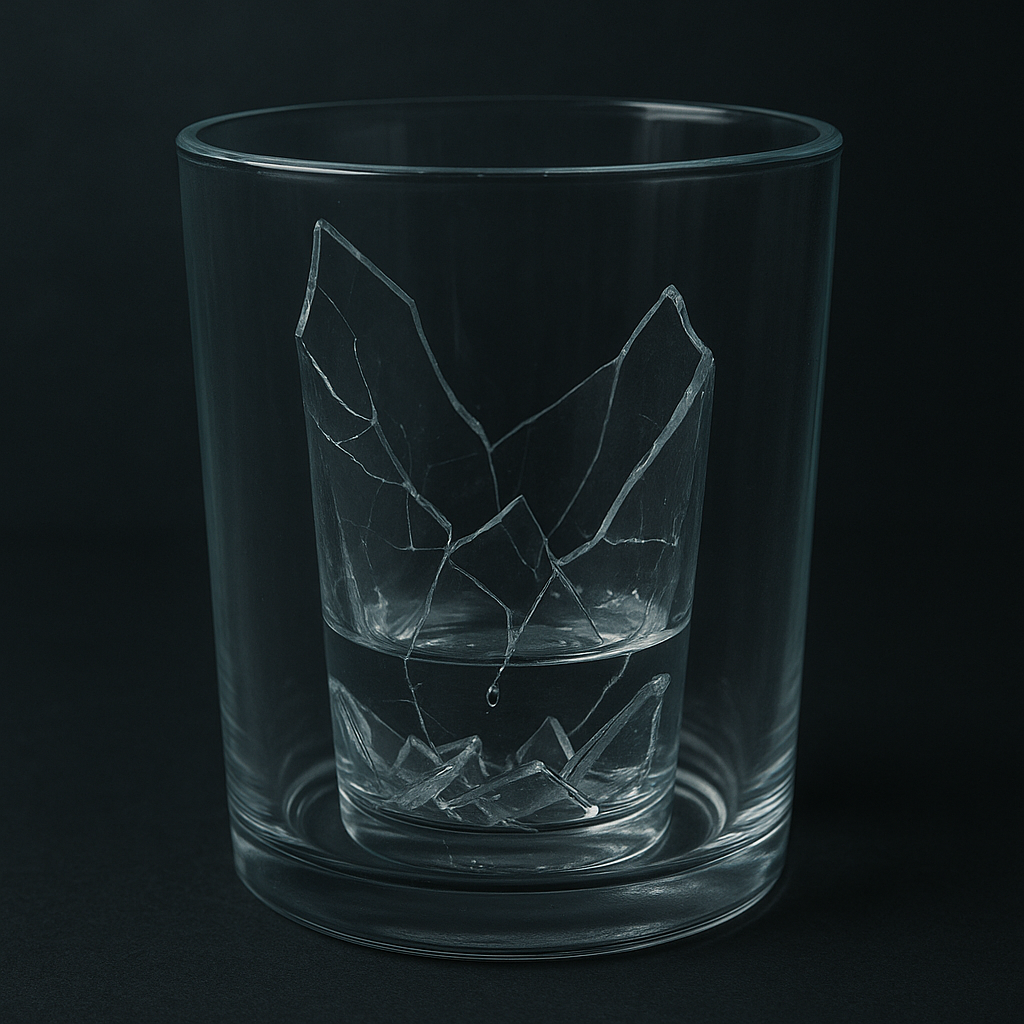 Sometimes, taking a step back isn’t about giving up—it’s about creating space to hold what’s still intact. Like placing a cracked glass inside a sturdier one, we can surround a fragile relationship with extra care and emotional boundaries. That way, the water—the trust, the history, the peace—doesn’t spill out completely. It gives us time. Time to sort through the damage, to slowly reach in and remove the broken pieces, without losing everything in the process. And if we truly want to repair the relationship, we must be willing to reach in, remove the broken shards, and clean the water.
Sometimes, taking a step back isn’t about giving up—it’s about creating space to hold what’s still intact. Like placing a cracked glass inside a sturdier one, we can surround a fragile relationship with extra care and emotional boundaries. That way, the water—the trust, the history, the peace—doesn’t spill out completely. It gives us time. Time to sort through the damage, to slowly reach in and remove the broken pieces, without losing everything in the process. And if we truly want to repair the relationship, we must be willing to reach in, remove the broken shards, and clean the water.
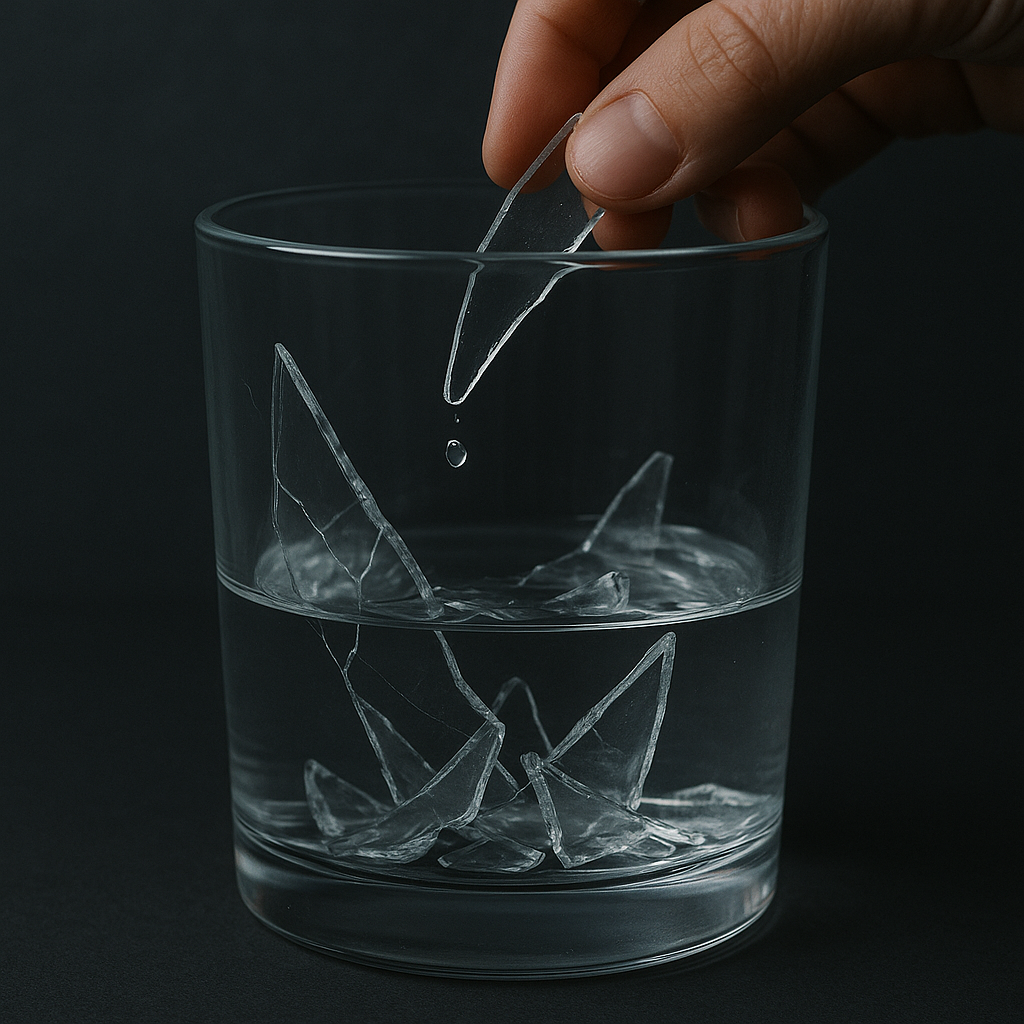 That process is messy. It’s painful. Sometimes, while trying to fix what’s broken, we end up getting cut ourselves. But that’s the price of healing. If a relationship matters enough, if the transparency once felt worth it, then maybe the pain is part of the path to repair.
That process is messy. It’s painful. Sometimes, while trying to fix what’s broken, we end up getting cut ourselves. But that’s the price of healing. If a relationship matters enough, if the transparency once felt worth it, then maybe the pain is part of the path to repair.
This idea has shown up for me in so many forms. I’ve realized that people who get close to me don’t just see who I am, but they reflect it back. And when that reflection is distorted, it’s often because the glass has been cracked. Sometimes I notice the hurt because it mirrors a flaw in myself. Other times, I’m the one holding the sharp piece, unintentionally hurting someone I care about.
College taught me how quickly people come and go. But it also showed me that not every goodbye has to be permanent, and not every crack is the end. Some relationships are worth the careful effort. Others teach us that it’s okay to walk away, not out of anger, but with respect for what once was.
I’m learning to be okay with the messiness of it all. To not rush to patch every leak, to sit with discomfort, and to ask myself: Do I want to rebuild this? Is the water inside still clear enough to fight for?
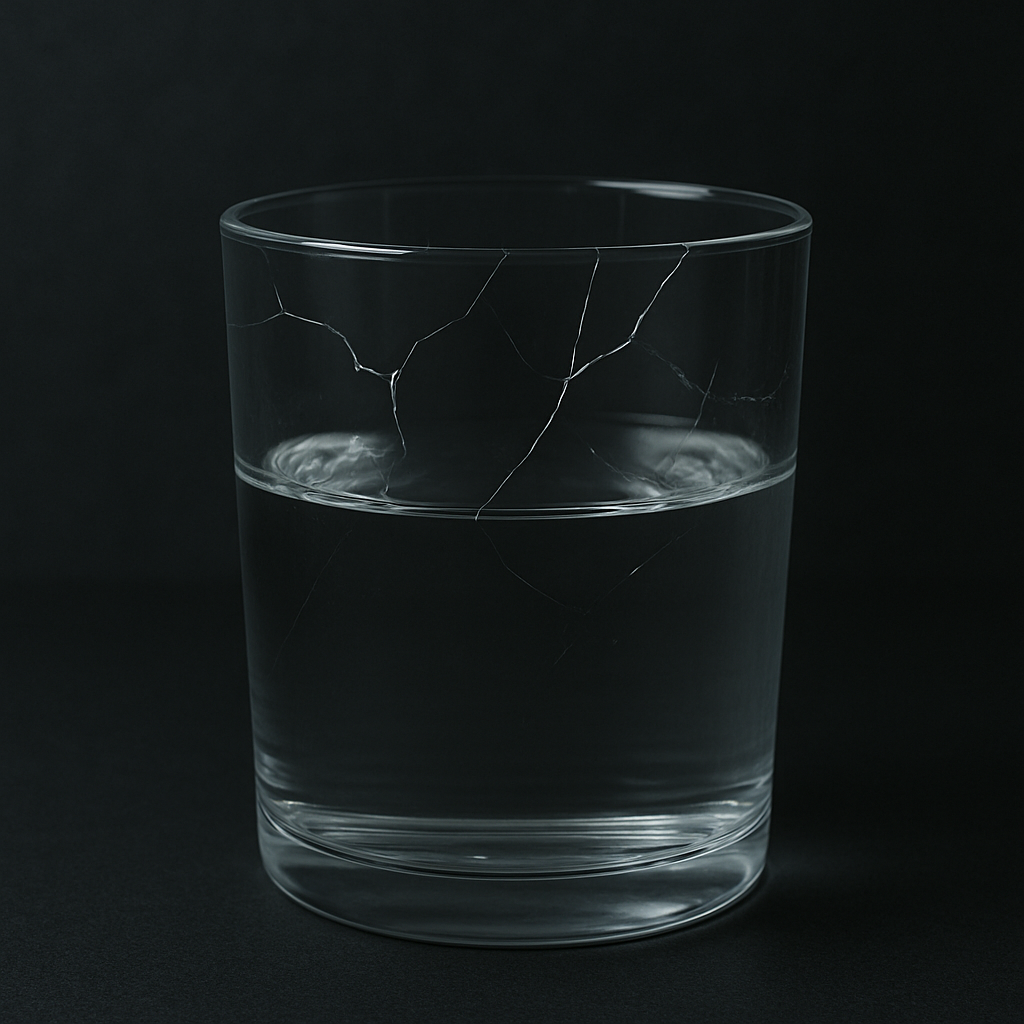 Relationships will always be fragile. There’s no way around that. But maybe fragility isn’t a flaw. Maybe it’s what makes them real. The cracks, the transparency, the effort to hold something sacred even when it’s been tested, because that’s where meaning lives.
Relationships will always be fragile. There’s no way around that. But maybe fragility isn’t a flaw. Maybe it’s what makes them real. The cracks, the transparency, the effort to hold something sacred even when it’s been tested, because that’s where meaning lives.
So here I am, with a few more cracked glasses than before, but also a deeper understanding of how to hold them. Not too tightly. Not carelessly. But with both caution and care. Because in the end, it’s not just about keeping the water in. It’s about valuing what the water represents: trust, closeness, and the willingness to keep trying, even when it hurts.

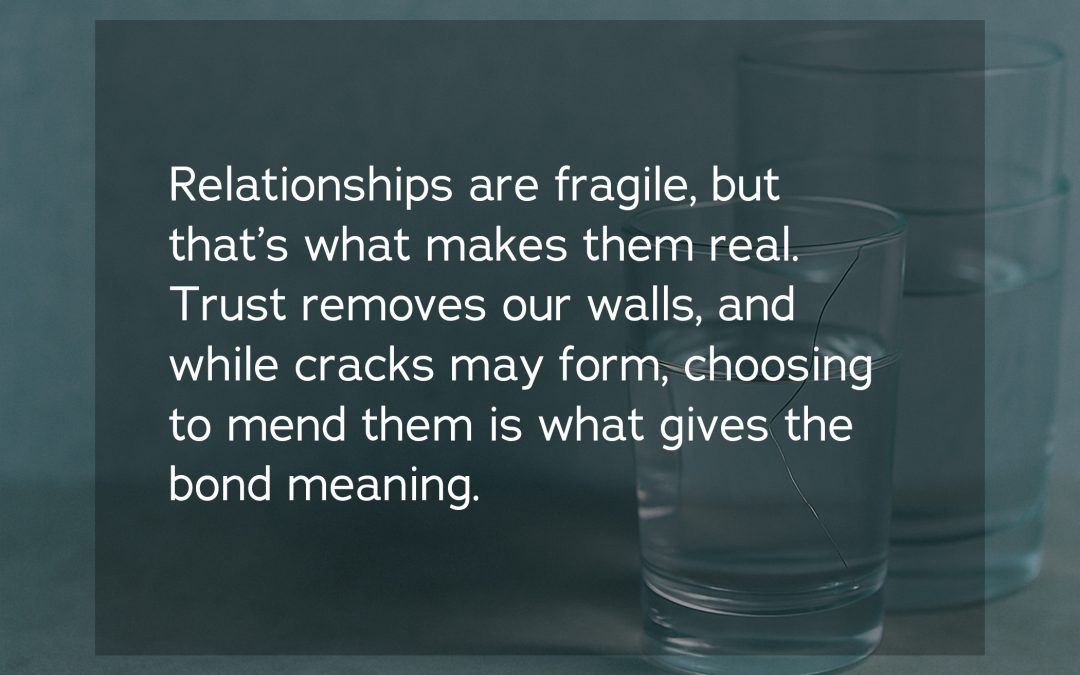
Anuj, this was very deep and I like the cup analogy. Relationships are truly fragile and take time, effort and commitment. Its easy to walk away but harder to mend and maintain. We have to pick and choose which ones are important and to what degree. There are several types and depths of relationships as well. Like you mentioned in your cup analogy, relations are present at each level. Very few reach the innermost layer though. You gave me a lot of food for thought.